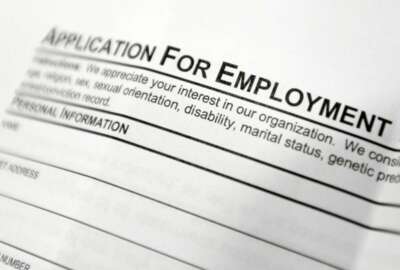OPM redefines the skills that 40K federal HR employees need
New competency models for human resources (HR) positions rethink the job skills necessary for more than 40,000 HR employees across government.
As agencies attempt to boost skills-based hiring, the Office of Personnel Management is turning its attention to the federal HR employees who manage those hires in the first place.
New competency models for human resources (HR) positions, which OPM published Thursday, rethink the job skills necessary for more than 40,000 HR employees across government.
OPM’s update is one part of a broader effort to address strategic human capital management, a challenge that has remained on the Government Accountability Office’s High Risk List for more than 20 years. That challenge points to agencies’ long-lasting struggle to identify and address skills gaps in their workforces.
“[It’s a] high-risk area in part because of the need to address current and emerging skills gaps that are undermining agencies’ abilities to meet their missions,” OPM Director Kiran Ahuja said to chief human capital officers in a memo Thursday. “This effort also informs skills-based hiring efforts governmentwide.”
The competency models are lists of skills agencies should seek out in both recruitment and retention of various federal HR roles. The competencies cover all HR management work, as well as more specialized skills for areas like classifications and employee benefits. The lists of qualifications range across General Schedule levels. Many of the competencies, such as creative thinking, decision-making and teamwork, emphasize hands-on, soft skills rather than skills only gained through education.
Creating the new HR competencies took several years for OPM to complete. To better understand what needed to be included, OPM used federal employees’ feedback about their own experiences on the job. That information came from a survey OPM launched in 2021, gauging what skills and competencies feds believed were necessary for performing HR work.
OPM then incorporated the findings from that survey into the final competencies now listed for governmentwide HR work.
“The data collected from an environmental scan, focus groups and surveys painted a comprehensive picture of human resources management work across the federal government,” Ahuja said in the memo.
The HR competency models are also not the only refresh OPM has made recently. On April 29, OPM offered guidance for skills-based hiring in AI-related work.
In July 2023, OPM also defined more than 50 skills federal employees will need when working with artificial intelligence. And last September, OPM also created a handbook detailing skills-based job qualifications for many other governmentwide positions, including roles in psychology, social work, financial administration, quality assurance and facility operations — just to name a few.
The new competency models aim to support a segment of the federal workforce that’s been struggling for a long time. For years, HR has remained a governmentwide, mission-critical skills gaps — meaning that agencies don’t have the right skills on their HR staff, and many are lacking the employees needed to get the job done effectively.
OPM is outlining more work still ahead to try to better invest in the federal HR workforce. For one, the agency plans to launch an HR career growth platform this fall, which will be a way for federal HR practitioners to access information and interact as a community.
OPM also plans to design an HR career pathing model — which will move beyond recruitment-based efforts, and add in more retention-based initiatives.
And a few months ago, OPM began piloting a career pathing model at nine agencies for both early and intermediate HR positions. Eventually, that pilot will build out to include more senior HR positions.
OPM has said that right now, agencies are underusing skills-based hiring. OPM is asking agencies to shift to skills-based hiring by identifying specific position requirements, working with HR to design assessments to yield qualified applicants, and using skills-based assessments. But before those changes can happen, agencies will need the right HR staff in place to be able to handle the shift.
Now with the new skills-based competency models, OPM is making an effort to open the doors to more HR candidates, and more accurately match the skills on the list with what federal HR employees have actually said they need in their positions. OPM has said strengthening the HR workforce is essential to supporting the workforce overall.
OPM’s efforts dovetail with skills-based hiring goals from an executive order in 2020 during the Trump administration. The 2020 order urged agencies to use skills-based assessments — rather than education credentials and written questionnaires — to evaluate and vet job candidates.
In 2022, OPM published guidance for agencies to understand how to make hires based more on actual skill. Skills-based hiring supports merit systems principles as well, OPM said, since it focuses on a more equitable approach to recruitment.
The HR competency model update also aligns with the overarching President’s Management Agenda goal of strengthening and empowering the federal workforce.
In an April 30 blog post on Performance.gov, the Biden administration said, “Updating the model allows HR professionals to better identify skill gaps and enhance skills for building capabilities governmentwide.”
Copyright © 2025 Federal News Network. All rights reserved. This website is not intended for users located within the European Economic Area.
Drew Friedman is a workforce, pay and benefits reporter for Federal News Network.
Follow @dfriedmanWFED





